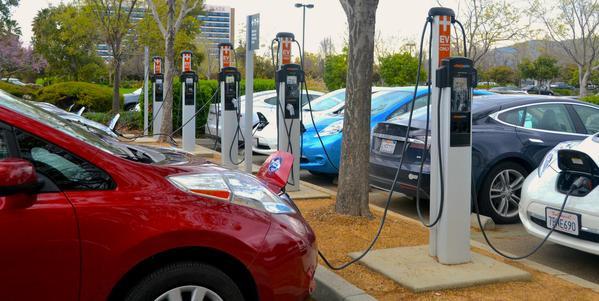As the world shifts towards a more sustainable future, electric vehicles (EVs) have emerged as a key component of the transition to clean and efficient transportation. With the rise of EVs, the development of reliable and accessible electric car charging solutions becomes increasingly important. In this article, we will delve into the future of mobility by exploring the various electric car charging solutions available today. From home charging to public infrastructure, we will provide friendly and helpful insights into the evolving landscape of electric car charging. So, let’s dive in and discover the exciting world of electric vehicle charging!
1. Home Charging
Home charging is the most convenient and accessible option for many electric vehicle owners. By installing a dedicated charging station at home, EV owners can conveniently charge their vehicles overnight or during periods of low electricity demand. Here are a few key points about home charging:
Charging Equipment
Home charging stations, also known as Electric Vehicle Supply Equipment (EVSE), provide a safe and efficient way to charge your electric vehicle. These stations can be installed by certified installers such as Pro EV and are compatible with various EV models.
Level 1 vs. Level 2 Charging
Level 1 charging utilizes a standard 120-volt household outlet, offering a slower charging rate, typically adding 2-5 miles of range per hour. Level 2 charging, on the other hand, requires a 240-volt outlet and provides faster charging speeds, typically adding 10-25 miles of range per hour.
Smart Charging
Some home charging stations come equipped with smart charging capabilities, allowing users to schedule charging sessions, monitor energy usage, and take advantage of off-peak electricity rates. This helps optimize charging efficiency and reduce costs.
2. Public Charging Infrastructure
To support long-distance travel and provide charging options for those without access to home charging, public charging infrastructure plays a vital role. Public charging stations are strategically located in parking lots, shopping centers, highways, and other public spaces. Here’s what you need to know about public charging infrastructure.
Level 2 and DC Fast Charging
Public charging stations offer Level 2 (240-volt) charging as well as DC Fast Charging (DCFC). DCFC stations provide high-power charging, allowing EV owners to rapidly recharge their vehicles, typically adding 60-80 miles of range in just 20-30 minutes.
Network Providers
Various charging network providers offer access to a wide range of public charging stations through membership programs or pay-as-you-go options. These providers maintain and expand the charging infrastructure, ensuring a reliable network of charging stations.
Mobile Apps and Maps
EV drivers can easily locate and navigate to available charging stations using mobile apps and online maps. These tools provide real-time information about station availability, pricing, and compatibility with different EV models.
3. Workplace and Destination Charging
Workplace and destination charging stations are increasingly common, providing EV owners with additional charging opportunities while they work, shop, or dine. These charging stations contribute to the overall accessibility and convenience of electric vehicle ownership. Consider the following points:
Employer Support
Many companies and organizations are installing charging stations in their parking lots to support employee adoption of electric vehicles. Workplace charging allows EV owners to conveniently charge their vehicles during working hours, increasing EV adoption rates.
Destination Charging
Hotels, shopping centers, and other destinations often offer EV charging stations to attract environmentally conscious customers. Destination charging provides peace of mind for EV owners, knowing they can top up their vehicle’s battery while enjoying their visit.
4. Emerging Technologies
The future of electric car charging is continually evolving, with ongoing advancements and emerging technologies on the horizon. These technologies aim to improve charging efficiency, reduce charging times, and enhance the overall EV ownership experience. Here are a few noteworthy advancements:
Ultra-Fast Charging
Researchers and industry experts are developing ultra-fast charging technologies that can add significant range to an EV’s battery in a matter of minutes. These advancements are poised to revolutionize long-distance travel and address range anxiety concerns.
Wireless Charging
Wireless charging systems, also known as inductive charging, are being developed to allow EVs to charge by simply parking over a charging pad. This technology eliminates the need for physical cables and connectors, further streamlining the charging process.
Vehicle-to-Grid (V2G) Integration
V2G technology allows electric vehicles to not only draw power from the grid but also send excess electricity back into the grid when needed. This bi-directional flow of energy has the potential to stabilize the grid and create a more dynamic and sustainable energy ecosystem.
Conclusion
Electric car charging solutions are rapidly evolving to meet the growing demand for sustainable mobility. From home charging to public infrastructure, workplace and destination charging to emerging technologies, the future of electric car charging holds great promise. As the world shifts towards cleaner transportation, it is essential to embrace and support the development of reliable and accessible charging solutions. By exploring these various options and advancements, we can drive the transition to a sustainable and electrified future of mobility.



























